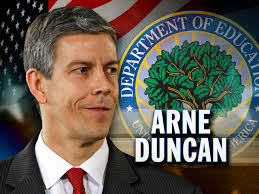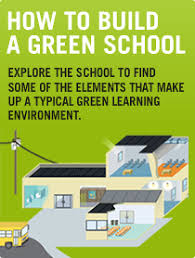Archive for the ‘propaganda’ Tag

NOT WITH MY CHILD YOU WON’T
Guest Post by Joan Landes

Joan Landes, a Utah mental health therapist, has spoken out in opposition to Common Core. The speech posted below comes from a recent conference where she spoke. She has given permission to post her findings here, and they are also posted on her blog here: Not with my child you won’t!
Thank you, Joan Landes.
National Educational Standards are Based on Myths and False Premises
Myth 1: International standardized tests are important indicators of international competitiveness
Fact: The U.S. has never scored well on these tests, but still led the world in all economic indicators.
- The international tests began in the mid-sixties and the most important test, PISA began more recently. Since the 1960s, the U.S. has led the world in every significant prosperity indicator including patents, research and development funding, business formation, growth in productivity (Baker, 2007). During this time, the number of years that U.S. students topped the international test scores? None. (Ravitch, 2013)
- High test scores are negatively correlated with national indicators of innovation and entrepreneurship (Baker, 2007). China and Singapore know this and are worried (Zhao, 2012).
- Twenty-five years ago, mediocre scores triggered biased groups to warn “that America’s inadequate education system and workforce skills imperiled our competitiveness and future. Their warnings were followed by a substantial acceleration of American productivity growth in the mid-1990s, and by an American economy whose growth rate surpassed the growth rates of countries that were alleged to have better prepared and more highly skilled workers”(Strauss, 2013).

Reuters/Vincent Kessler
Myth 2: International tests prove American students don’t perform as well as other industrialized nations’ students.
Fact: The tests don’t compare “apples to apples” for many reasons.
- For instance, the scores from China come only from Shanghai which is the richest and most educationally elite city in China, which forbids migrant children and represents a mere 2 percent of the students in China. (Nisan, 2013).
- U.S. scores, by contrast, are a much more representative sampling of our complex demographics. In fact, students from affluent suburban school districts in the U.S. are very competitive with other students. The student groups who don’t perform well tend to come from dysfunctional families and communities of which the U.S. samples contain more than most other OECD (Organization for Economic Cooperation and Development) nations (Strauss, 2013; Carnoy & Rothstein, 2013).
- The score spread between all countries is fairly narrow. Between the highest performing state in the U.S. and the highest performing nation in the world (Taiwan) in 2009 is only about a 10% difference in raw scores (Schneider, 2009). Even the spread between Taiwan and the lowest performing “state” (Washington D.C) is only about a 30%. So, that would mean Taiwan scores an “A”, Massachusetts an “A- or B+” and Washington D.C. earns a C-.
- The validity and reliability of the test itself is under serious question (Carnoy & Rothstein, 2013). Translations may not be good, scoring has not been validated and many student groups are not tested (Schneider, 2009). Many countries “cheat” on the test by using non-representative sampling and by “teaching to the test” to increase student scores (Stephen, 2013).
Myth 3: We should seek to emulate China and Singpore’s rigid educational system because they score well on standardized tests.

Fact: China and Singapore are very low on indices of innovation and creativity.
- High test scores are inversely related to high levels of creativity and innovation. Merely 473 innovations from China were recognized by the world’s leading patent offices outside China in 2008 versus 14,399 from the United States. (Zhao, 2012).
- Other indicators of happiness/prosperity/creativity are also inversely related to high test scores (Baker, 2007).

Steve Jobs, founder of Apple
A noted expert on Asia predicted at the World Economic Summit: “The next Apple, the next Google will come, but probably not in China, at least not in the 100 years . . .If China wants (to have an Apple or Google), it must rebuild its education system.”
Another expert states: “Standardized, narrow, and uniform educational experiences, high-stakes standardized testing, (and) a push for conformity . . . are . . . identified in China and Singapore’s education system for destroying the nations’ creativity and entrepreneurial spirits” (Zhao, 2012).

Steve Wozniak, co-founder of Apple
Steve Wozniak from Apple said of rigid systems like Singapore, “When you’re very structured almost like a religion . . . Uniforms, uniforms, uniforms . . . everybody is the same. Look at structured societies like Singapore where bad behavior isn’t tolerated. You are extremely punished. Where are the creative people? Where are the great artists? Where are the great musicians? Where are the great singers? Where are the great writers? Where are the athletes? All the creative elements seem to disappear” (BBC, 2011).
The highest performing nations on the tests (China, Singapore, India, Korea) are moving away from constant testing and rigid structure while the U.S., with the Common Core assessments are diving headlong into old methods that will kill innovation.
In fact, an educational “superstar”, Finland, has NO assessment program until the end of high school, shorter school days and a 3 month break in summer, and very little homework. Furthermore, school is not compulsory until age 7! (Hendrickson, 2012). In addition, the national curriculum is not used to roll spindle and mutilate students and teachers through punitive assessments. The nation has a very “hands-off” attitude toward individual schools and understands that individual customization of curriculum and independence of teachers and schools creates the best results overall (Hendrickson, 2012).
- After an average level of educational achievement is attained, further emphasis on tests is counterproductive to innovation (Baker, 2007).
“Among high-scoring nations, a certain level of educational attainment, as reflected in test scores, provides a platform for launching national success, but once that platform is reached, other factors become more important than further gains in test scores. Indeed, once the platform is reached, it may be bad policy to pursue further gains in test scores because focusing on the scores diverts attention, effort, and resources away from other factors that are more important determinants of national success.” (Baker, 2007)
Myth 4: We should embark on a national, top-down restructuring of educational standards such as Goals 2000, Outcome-Based Education, No Child Left Behind and the Common Core Standards to improve our scores and thus future prosperity.
Are you kidding?
Fact: National Standards in themselves do not determine student excellence. Both the highest and lowest performing nations have national standards. National standards/programs don’t correlate with high achievement on international testing.
But what does make a difference?
Unique state standards do make a difference in student achievement when combined with other layers of teacher requirements, moderate levels of subject mastery assessments and customizable programs for individual students. Massachusetts had a true state-led effort to craft excellent standards and supports. This process was transparent and involved years of public debate and input before a consensus was reached. The results were the envy of the rest of the U.S. and, even with the disparate SES, managed to compare favorably on international tests with the highest performing students in the world.
Using the 50 states as individual laboratories, each state and even each district can learn from the successes and failures of the others. An excellent example of this process is our neighbor to the north, Canada.
When international testing commenced, Canada occupied the middle of the pack, similar to the U.S. They have about 24% of students who are immigrants. But within a few decades, Canada was able to shoot to the top tier, while the U.S. remained stuck. What did Canada do? Did they fund a federal department of education, impose a draconian, coast-to-coast set of uniform standards, assessments and eventually curricula?
No, they did not (Edwards, 2013).
In fact, Canada’s educational system is much less structured than ours. They don’t have a national department of education or provide any federal funding. Each separate province (similar to States) is very competitive with the other provinces and seeks through a process of competition to quickly innovate and implement strategies which make real differences for students (Macleans, 2010). The gains have been real and well-documented by research. This kind of real evidence is what should drive educational decisions—not the machinations of special interests, crony governmentalism, and federal bribes from the Department of Education.
With monolithic national standards, students are effectively trapped with nowhere to escape for a better education. Unless they move to Canada.

Common Core Standards ignore recent research in neuroscience
Science/Research findings are of limited value and can be biased. If the findings of a particular study don’t sound intuitively correct, be very skeptical. Poor science has been used in the past to justify very harmful practices.
Example of the limits of Science: Marasmus
In the early part of the 20th century babies in orphanages were dying at an alarming rate. Scientists were flummoxed. They called the fatal disease “Marasmus” (Montagu & Matson 1979). Assuming the mortality rate was due to bacteria, they prescribed strict separation for the babies from touching or contact. Only ultra-hygenic feeding and diapering were allowed with no extra handling.
The babies continued to die as if in a plague.
Finally, some bright soul decided to start cuddling and hugging the babies. They stopped dying and started thriving. “Marasmus” was nothing more than the deprivation of attention and love (Stout, 2005).
Programs like Common Core Standards may be the “marasmus” of the 21st century. Will our children have to suffer because of badly researched programs?
No experts on child development, mental health, or neuroscience helped to craft Common Core
- CC is based on old motivational science from the 1910s and 1930s with B.F. Skinner.
- He studied “stimulus-response” patterns to learn how to manipulate animals and people.

- A Skinnerian Box
- Skinner developed ways to train people and animals through the coercion of punishments and rewards.
- He even had his own baby daughter in a glass box crib for the first years of life although he said the contraption was a solution to keep her warm without bedclothes (Snopes, 2014)
 j
j
Skinner considered this box a great advancement in childrearing
Problems with using punishments and rewards as motivation
- External reinforcers tend to lose effectiveness over time
- External reinforcers usually take significant time/effort to administer properly
- External reinforcers are often expensive
- External reinforcers often leave subjects feeling manipulated and dependent on external control
- External reinforcers abrogate freedom
- External rewards tend to diminish intrinsic motivation (Timms, 2013)
Current Neuroscience finds that human learning occurs best in loving relationships

Child in a Factory
Unlike factory production methods from the 1910s, recent findings from neuroscience support the idea that relationships foster better, faster and more permanent learning for children (Cozolino, 2013).
Stressors from Common Core Assessments can interfere with two important types of learning
- Cognitive learning: Facts, procedures, memory, etc.
- Emotional learning: Interpreting others intent, expressing and identifying feelings, self-soothing, risk-taking, etc.
Common Core over-testing creates anxiety
Common Core Assessment partners SBAC and PARC add even more testing than NCLB requires at present. In addition their tests are longer and the consortiums encourage interim testing 2 or 3 times during the year besides the year-end test-weeks. In addition, these tests will be used improperly to decided teacher evaluation and sometimes pay, school rankings, child-progress and possibly even graduation (FairTest, 2014).

Test Anxiety
Common Core over-testing creates an environment of “conditions of worth”
Children need to feel intrinsically loved and valuable. Failure at tests, and even the testing itself can stress even the most resilient children. The are convinced that their worth is based on their performance.
Vulnerable children respond negatively to even normal stressors
- Children who have been abused, neglected or traumatized often display alarming responses to stress– especially outside of a safe, loving relationship. (Cozolino, 2013; Adams, 2014).
- Studies show that mammals and human that experience little nurturing in early childhood result in lower abilities to emotionally regulate themselves. (Raabe & Spengler, 2013)
Current neuroscience shows how early stress creates later emotional dysregulation

Emotional Dysregulation– crying
- Epigenetic studies show how the relational stress of maternal deprivation or early trauma creates genetic changes in protein synthesis resulting in the failure to uptake cortisol. This results in longer periods of distress to smaller triggers. (University of Utah, 2014; Weaver et. al, 2004)
Common Core Will Widen the Achievement Gap and Hurt the Most Vulnerable Children.
- 20% of students in school have a “serious” mental/emotional condition that could receive a DSM diagnosis (NIH, 2013)
- Examples: Depression, anxiety, bi-polar disorder, suicidality, self-mutilation, addictions, obsessions, compulsions, panic disorder, reactive attachment disorder, phobias, oppositional defiant disorder, ADHD, trichotillomania, etc.
- Sexual and other abuse is not rare. Approximately 20% of girls and 10% of boys have been sexually abused and have many resulting emotional, cognitive and behavioral problems. (Bolen, 1999)
- Many more students have experienced physical/emotional abuse and neglect and other traumatizing factors which create problems for learning (Childhelp, 2014; Adams, 2014)

Traumatized children are the most vulnerable of all
Common Core Doesn’t Allow for Individualized Needs of Traumatized Children:
- Healing relationships first (Adams, 2014)
- Development of neglected neural modalities
- Relief from assessments which can create anxiety, depression and avoidance symptoms
The following harms are predictable
- The most vulnerable children will fall further behind the rest of the students.
- The achievement gap will widen (Adams, 2014)
- Vulnerable children will react more dramatically
Expect More
- Expect more mental disorders
- Expect more anti-social behavior
- Expect more school shootings
- Expect more self-harming and suicides

School violence will likely increase
How Should We Be Teaching Vulnerable Children?
With conditions of supportive relationships and few other resources, even traumatized students will tend to blossom (Cozolino, 2013, Adams, 2014).
Marva Collins taught “unteachable” inner city students in her home with practically no resources and they learned Shakespeare in third grade! Why? She first established a relationship! “I don’t care how much you know until I know how much you care” (Cozolino, 2013)

Marva Collins– she did miracles with “unteachable children” because of relationships
Relationships are Better Motivators Than Material Rewards
Children will perform better because of a relationship (I want my teacher to be proud of me!) more than for material rewards (I earned a candy bar!). Psychic rewards tend to be more powerful than material rewards.
Optimal Brain Development Requires Early Activation of Many Learning Modes
- Visual processing: drawing, painting, animation, and art appreciation, optical illusions, Where’s Waldo, video games.
- Auditory processing: foreign language, music, reading aloud, being read to, singing
- Emotional centers: identifying emotions, reading emotions on others, self-soothing strategies, emotional expression in safe environment (drama)
- Spatial/movement processing centers: building/manipulating objects, dance, sports, games, puzzles, cursive handwriting
- Memory centers: short term memory, long-term memory

Common Core Neglects Many Brain Modalities
- Common Core focuses huge amounts of time developing the left, prefrontal cortex activities in children to the neglect of other modalities. This will result in later difficulties in synthesis required for higher order thinking tasks such as creativity, innovation, critical analysis, perseverance in the face of opposition, etc. (Young & Doidge, 2013).
Common Core Reduces Experience with Literature
Common Core’s mandates for informational texts over literature deprive student’s brains of context (relationships). Stories/narratives foster larger areas of brain activation and memory activation than dry facts (Cozolino, 2013) Kids tell stories for a reason. The context gives meaning and meaning signals to the brain to remember (Cozolino, 2013)
Literature teaches both cognitive and emotional skills that informational texts can’t teach
One of the most important mental health purposes of education is to teach children to be empathetic, kind, to delay gratification and to become sensitive to their internal self-talk (conscience). Literature can assist with this through social learning. If these skills are not developed, the child becomes a heartless “clever devil” or as C.S. Lewis described, “Men without chests.” (People with active intellects and libido, but no heart or compassion). More admirable literature, not less, is what is need for children’s resilience.

Good literature embues the reader with compassion and empathy
Common Core Assessments Violate Student Privacy and Professional Ethics
Hundreds of assessment points on students and parents have been authorized by the DOE (NCES 2014) including substance abuse, record of child protective services, illnesses, affiliations, etc. These are information points which in the medical or mental health profession would be protected by HIPAA regulations.
New FERPA Changes Violate Privacy
Because the Obama administration made significant, executive changes to FERPA, student information can now be accessed by corporations, school personnel or any other entity that the state approves.

Trained professionals would be heavily fined or punished under the same circumstances
If doctors or psychologists did this, they would be fined at least $100,000 for each instance. And they could lose their license because of breach of confidentiality.
Why can the government get away with this violation?
Common Core is Completely Untested
Common Core Standards are completely untested experimentally yet are being inflicted on virtually every student in the entire U.S. from K-12 with NO PREVIOUS TESTING. This is an egregious violation of basic ethics and good science and shows the developers’ absolute disregard or ignorance of potential harms to children. The EPA conducts more testing for the food dyes in Kool-Aid than has been conducted on Common Core which kids will live with for 8 hours a day for 12 years.
No Hard Evidence Supports Common Core
Unlike other professions, educational bureaucrats are not using “evidence-based practices.”
Instead of funding yet another untested scheme, we must demand “Evidence-based Education”.
Show us the evidence FIRST.
Common Core Aligned Curriculum Provides Validation for Radical Lessons Which Can Harm Children.
CC alignment makes it more difficult for parents to challenge because the administrator appeals to the authority of the standards, “But it’s Common Core aligned!” However, the developers are careful to distance themselves from curriculum development so they can’t be held responsible for damaging lessons. We as parents can’t let them have it both ways. Either the Standards are RESPONSIBLE for the curriculum that is validated by “alignment” or they shouldn’t allow the label “Common Core Aligned.”
Numerous Examples Exist of Radical Curricula “Aligned” or Even Officially Recommended by Common Core:
The examples are multiplying every day, but here are just four problematic sources:

Toni Morrison, author of “The Bluest Eye”
ELA recommended books for 11 graders (Common Core Standards, 2012)
- The Bluest Eye, by Toni Morrison (Landes, 2013) Graphic child sex abuse depictions. Landes is a mental health professional who asserts that this book could endanger youth who are victims of sexual abuse by forcing them to relive their trauma while justifying the perpetrator.
- Dreaming in Cuban, by Cristina Garcia (Berry, 2013) Graphic sex depictions.
Other texts/books aligned with Common Core
- The Invisible Man, by Ralph Ellison (Kane, 2013) Graphic rape depictions.
- Voices in Literature and Writing, (Landes, 2013) Teaches first-graders how to create propaganda and trains them in mental health cognitive distortions.
References
- Adams, J.M. (2014). New ‘trauma-informed’ approach to behavioral disorders in special education. Ed Source website. Retrieved from: http://edsource.org/today/2014/new-trauma-informed-approach-to-behavioral-disorders-in-special-education/56753
- Arrowsmith-Young, B. & Doidge, N. (2013). The Woman Who Changed Her Brain: And Other Stories of Cognitive Transformation. Published by Simon and Shuster, New York; NY USA.
- Baker, K. (2007). Are International Tests Worth Anything? Phi Delta Kappan, 89(2). 101-104
- BBC. (2011, Jan. 20). Steve Wozniak: “Think for yourself.” www.bbc.co.uk
- Berry, S. (2013). ArizonaSchool District Pulls Sexually Explicit Book Recommended by Common Core Standards. Retrieved from: http://www.breitbart.com/Big-Government/2013/09/12/Arizona-School-District-Pulls-Sexually-Explicit-Book-Recommended-by-Common-Core-Standards
- Bolen, R.M. and M. Scannapieco, Prevalence of child sexual abuse: A corrective metanalysis. Social Service Review, 1999. 73(3): p. 281-313.
- Carnoy, M. & Rothstein, R. (2013). What do international tests really show about U.S. student performance? Economic Policy Institute. January 28, 2013. Retrieved from: http://www.epi.org/publication/us-student-performance-testing/
- Childhelp (2014). National Abuse Statistics, Childhelp website. Retrieved from: http://www.childhelp-usa.com/pages/statistics#gen-stats
- Common Core Standards (2012). Appendix B: text exemplars and sample performance tasks. Retrieved from: http://www.corestandards.org
- Cozolino, L. (2013) The Social Neuroscience of Education: Optimizing Attachment and Learning in the Classroom. Published by W.W. Norton and Company. New York: NY USA.
- Edwards, C. (2013). PISA school test results. CATO Institute website. Retrieved from: http://www.cato.org/blog/pisa-school-test-results
- Henrickson, K.A. (2012). Assessment in Finland: A Scholarly Reflection on One Country’s Use of Formative, Summative, and Evaluative Practices. Mid-Western Educational Researcher. Volume 25, Issues 1/2. Retrieved from: http://www.mwera.org/MWER/volumes/v25/issue1-2/v25n1-2-Hendrickson-GRADUATE-STUDENT-SECTION.pdf
- Kane, A. (2013). Common Core reading lists and pornography. Retrieved from: http://watchdogwire.com/northcarolina/2013/09/29/common-core-reading-lists-and-pornography/
- Landes, J. (2013). Why the book, “The Bluest Eye” should be banned from schools. Psychouttheopposition website. Retrieved from: http://psychouttheopposition.wordpress.com/category/education/
- Maclean’s (2010). Website. Retrieved from: http://oncampus.macleans.ca/education/tag/pisa/
- Montagu, A., & Matson, F. (1979). The human connection. New York: McGraw-Hill.
- NCES(2014) NationalCenter for Educational Statistics. Retrieved from: http://nces.ed.gov/forum/datamodel/eiebrowser/techview.aspx?instance=studentPostsecondary
- NIH (2013) National Institute of Health website. Retrieved from: http://www.nimh.nih.gov/statistics/1anydis_child.shtml
- Nisan, M. (2013). Why Shanghai’s Amazing Test Scores are “Almost Meaningless,” Business Insider, December 3, 2013.
- Raabe, F.J. & Spengler, D. (2013). Epigenetic Risk Factors in PTSD and Depression. Frontiers of Psychiatry. 2013; 4: 80. Published online 2013 August 7. doi: 10.3389/fpsyt.2013.00080 PMCID: PMC3736070
- Ravitch, D. (2013). What You Need to Know About the International Test Scores, The Huffington Post. December 3, 2013.
- Schnieder, M. (2009) The International PISA Test. EducationNext. Fall 2009 / Vol. 9, No. 4.
- Snopes, (2014) One Man and a Baby Box. Snopes.com retrieved from http://www.snopes.com/science/skinner.asp
- Stephen, M. (2013). PISA: Poor Academic Standards–an Even Poorer Test, The Telegraph. December 2, 2013.
- Stout, M. (2005) The Sociopath Next Door. Broadway Books, a division of Random House Publishing.
- Strauss, V. (2013). How Public Opinion About the New PISA Test Scores is Being Manipulated. The Washington Post. December 1, 2013.
- Timms, M. (2013). Who cares about money? The New Economy. Retrieved from: http://www.theneweconomy.com/strategy/who-cares-about-money
- University of Utah Health Sciences Website (2014). Epigenetics: Lick Your Rats. Retrieved from: http://learn.genetics.utah.edu/content/epigenetics/rats/
- Weaver, I.C.G, Cervoni, N., Champagne, F.A., D’Alessio, A.C., Sharma, S., Seckl, J.R., Dymov, S., Szyf, M., & Meaney, M. (2004). Epigenetic programming by maternal behavior. Nature Neuroscience, 7, 847-854
- Zhao, Y. (2012) Flunking Innovation and Creativity. Phi Delta Kappan, September 2012 vol. 94 no. 1 56-61.
 My fourth grader saw this poster. He asked me what a carbon footprint was.
My fourth grader saw this poster. He asked me what a carbon footprint was.
I told him that some scientists think carbon hurts our earth, while other scientists say that is not actually true. Some people think that the government wants to tax people so much that they use, as an excuse, the idea of carbon footprints. They will tax people more if they do an activity that increases carbon on earth.
I told him that I have not studied it enough yet to have an opinion of my own. I do not know which scientists are closer to the truth, but because it’s not settled, schools should not be teaching it as if it were a fact.
And people should not be hanging posters like this where children will see and assume one side of the argument is the only true side.
This anecdote is just a forward to the reason I’m writing today. The original reason is this link:
https://docs.google.com/viewer?a=v&q=cache:leMYpC7VZ40J:www.chesapeakebay.net/channel_files/18256/affiliate_update_-_epa_region_3_sub-award.ppt+&hl=en&gl=us&pid=bl&srcid=ADGEEShjVUlWcJ_QXczKpqycvtgsx_sH58TXfd0eCMafK1wcpvSaEm7OTOcXyrpPqStPJYlzNnDHe6H1Kf4XX6KAb4T_K00Fr_QiX922VCkZtSlVJT28EroJEG3Vg3M10doX6XVAI-XF&sig=AHIEtbSOtdWRC-f4oItTEg-l-pnCSdDCTQ
Thanks to the Missouri Education Watchdogs publicizing it, here: http://www.missourieducationwatchdog.com/2012/12/wading-into-standards-weeds.html
If you click on that top link, you’ll find a powerpoint presentation entitled: “EPA Region 3 Sub-Award Update.”
So what?
EPA means Environmental Protection Agency. And Region 3 refers to a region –not a state– that the US Dept. of Education is now recognizing (moving away from the concept of states which can be such a pesky reminder of Constitutional rights). “Sub-Award update” means that money is being accounted for, having been awarded by the federal government to “region 3” to alter local education to align with EPA goals –rather than previously held academic priorities for schools, which were previously determined by local entities like school boards and principals.

Yes, it’s creepy. It is propaganda, pure and simple. And the head of all public schools in our country, Arne Duncan, has promised us he’s going to push for more and more of it.

US Sec. of Education Arne Duncan announced, “Education plays a vital role in the sustainability movement… education must be part of the solution… This week’s sustainability summit represents the first time that the Department is… educating the next generation of green citizens and preparing them to contribute to the workforce through green jobs… Educators have a central role in this… teach students about how the climate is changing… explain the science behind climate change and how we can change our daily practices…. prepar[e] students for jobs in the green economy… the Department of Education hasn’t been doing enough in the sustainability movement. Today, I promise you that we will be a committed partner…”

You’re kidding, right, Arne? You are saying that you will use schools to promote green propaganda despite the fact that millions of scientists, teachers, students and parents don’t believe a word of the “global warming” and “climate change” science?
“http://www.ed.gov/news/speeches/greening-department-education-secretary-duncans-remarks-sustainability-summit
Not only is he not kidding, he’s now paying the EPA to “align” with Common Core.
Link: https://docs.google.com/viewer?a=v&q=cache:leMYpC7VZ40J:www.chesapeakebay.net/channel_files/18256/affiliate_update_-_epa_region_3_sub-award.ppt+&hl=en&gl=us&pid=bl&srcid=ADGEEShjVUlWcJ_QXczKpqycvtgsx_sH58TXfd0eCMafK1wcpvSaEm7OTOcXyrpPqStPJYlzNnDHe6H1Kf4XX6KAb4T_K00Fr_QiX922VCkZtSlVJT28EroJEG3Vg3M10doX6XVAI-XF&sig=AHIEtbSOtdWRC-f4oItTEg-l-pnCSdDCTQ


It’s interesting that “Green Schools” are being promoted by the U.S. Department of Education. On the surface, greening schools sounds a little bit boring but not bad. Students learn wonders like “turn off the lights when you leave the room” and “eat healthy food”.
But along with that, they also learn things that are not science, not high-quality, uncontroversial, settled science. Teachers are being told to teach sustainable propaganda and call it science. Controversial points will be taught as if they were absolutes. It goes against the whole spirit of what education is about: students are not told to weigh information, study empirical evidence from many sources, and judge truth from fiction, fact from opinion.
They are just told that the sustainablility movement is true.
Schools will get grants if they push the green curriculum.
And teachers better teach it.


Here’s a link to the full text of the United Nations’ Agenda 21 global transformation plan: http://habitat.igc.org/agenda21/index.html
I take particular interest in these three chapters: 25, 24, and 36, as a teacher and as a mother.
Chapter 25 – the one about children: http://habitat.igc.org/agenda21/a21-25.htm
Chapter 24- the one about girls: http://habitat.igc.org/agenda21/a21-24.htm
Chapter 36- the one about education: http://habitat.igc.org/agenda21/a21-36.htm
If you are new to governmentspeak, you won’t see many red flags. It’s not until you slow down and really think about what they are writing (and not writing) that you begin to see how twisted this Agenda 21 really is.
Two examples:
From Chapter 25: “Ensure access for all youth to all types of education… ensure that education… incorporates the concepts of environmental awareness and sustainable development throughout the curricula…”
Did you catch that? Throughout curricula, that means in every single class– spelling, grammar, science, English, math, history, technology, art, languages, sports, student government, debate, home economics, and the rest– students must be learning environmental awareness and sustainable development? Does that not strike you as dogmatic- almost crazy?

Also from Chapter 25: ” Consider…recommendations of… youth conferences and other forums that offer youth perspectives.”
–On first reading, that sounds fine, right? Listening to young people. What could possibly be wrong with it?
Well, look up “Delphi Technique” when you have some time on your hands.

There are sustainability youth “conferences” happening right now that are clearly little more than the globalists’ politically motivated indoctrination camps.
After youth spend time “dialoging” about environmental issues –where the dialogue is being controlled by Agenda 21 activist facilitators– those facilitators will take the youth recommendations back to headquarters. Nice. Here’a a link to such a youth conference. All 14-year-olds and up are cordially invited to be totally immersed in the green, anti-sovereignty, anti-constitution, pro-collectivism, pro-communist, environmental agenda: http://www.agenda21now.org/index.php?section=home
It should not be creeping into our schools. But it is.
Teachers are being taught to teach sustainable development across the curricula.

The U.S. Department of Education is pushing it. http://www.ed.gov/news/speeches/greening-department-education-secretary-duncans-remarks-sustainability-summit
Secretary Duncan says in the above linked speech, “Educators have a central role in this… They teach students about how the climate is changing. They explain the science behind climate change and how we can change our daily practices to help save the planet. They have a role in preparing students for jobs in the green economy. Historically, the Department of Education hasn’t been doing enough in the sustainability movement. Today, I promise you that we will be a committed partner.”
And here: http://unesdoc.unesco.org/images/0014/001433/143370e.pdf Unesco promotes “Guidelines and Recommendations for Reorienting Teacher Education to Address Sustainability”

It’s obvious that teachers are being pushed in the direction of Agenda 21 without knowing it’s a political agenda. The Agenda 21 tenets, such as the supposed importance of limiting human reproduction, of limiting building, sports or recreational activities that touch grass, oceans or trees; of limiting airplane and car use, or of believing that there is human made global warming, are not settled facts among scientific communities (or in religious ones, for that matter.) Yet teachers are supposed to teach them as settled facts, as doctrine.

Please have the courage to say no if you are a teacher, a school board member, a principal, or a parent.
Even if you happen to believe in the tenets of Agenda 21, such as global warming, population control, or putting plants above or equal with humans’ needs, do you believe that all children should be subject to these teachings, regardless of what their parents or teachers or churches believe?
Shouldn’t a child be taught to weigh competing theories and judge empirical evidence for his/herself, rather than accepting a dogma blindly? Isn’t that what education is supposed to mean?

Yukon College Professor Bob Jickling’s article on this subject is worth reading: “Why I Don’t Want my Children to be Educated for Sustainable Development”
Link here:
https://whatiscommoncore.wordpress.com/2012/08/03/green-propaganda-does-not-belong-in-schools-yukon-college-professor-explains/

What is sustainable development? What is “unsustainable”?

At first glance, “sustainable development” –and the idea of teaching it in schools, museums, zoos, movies, media and planning commissions– might sound so reasonable as to make anyone opposing the sustainable obsession appear quite stupid.
“Sustainable development is development that meets the needs of the present, without compromising the ability of future generations to meet their own needs.” http://www.sd-commission.org.uk/pages/what-is-sustainable-development.html
But when you do a little digging, you see that it’s insane to follow “sustainability” as defined by the United Nations’ –and increasingly, the U.S. Dept. of Education’s, programs.
The U.N. wants to influence all students –and all humans– to focus on forced “sustainability” to the exclusion of all other things. All Other Things.

It’s sickening.
This stack-n-pack high rise is supposedly the ideal for a globally sustainable future. It makes the humans take up less space so the plants can grow. This is your sustainable future if the U.N. gets its way.
No private homes. No private property. No golf courses, no grazing flocks, no intrusions on the earth with scuba diving or snowskiing. Rip up pavement so that as few paved roads as possible remain. And allow few human births.
It’s not a horror movie. It’s the actual plan of UNESCO and many, many other “globally minded” politicians and individuals.
Read, read. It’s all referenced. Everything I am writing here is linked to documents you can verify, all written by the United Nations, not by any critic of the U.N.
So, “UNSUSTAINABLE” choices now include:

and, according to the UNEP Global Biodiversity Assessment Report, it’s also unsustanable to have:
- Ski Runs
- Grazing of Livestock: cows, sheep, goats, horses

- Scuba Diving
- Disturbance of the Soil Surface
- Large hoofed animals
- Fencing of Pastures or Paddocks
- Agriculture
- Modern Farm Production Systems
- Building Materials
- Industrial Activities
- Human-Made “caves” of brick and mortar, concrete and steel
- Paved and Tarred roads, highways, rails

- Railroads
- Floor and Wall Tiles
- Aquaculture
- Technology Improvements
- Farmlands, Rangelands
- Pastures, Rangelands
- Fish Ponds
- Modern Hunting
- Harvesting of Timber
- Logging Activities
- Fossil Fuels – Used for driving various kinds of machines
- Dams, Reservoirs, Straightening Rivers

- Power Line Construction
- Economic systems that fail to set a proper value on the environment
- Inappropriate Social Structures
- Weaknesses in Legal and Institutional Systems
- Modern Attitudes toward nature – Judaeo-Christian-Islamic religions
- Private Property
- Population Growth – Human Population Density

- Consumerism and population figures
- Fragmentation of Habitat – cemeteries, derelict lands, rubbish tips, etc.
- Sewers, Drain Systems, Pipelines
- Land use that serves human needs
- Fisheries
- Golf Courses
- Synthetic drugs
- Fragmentation – Agricultural development, etc.

For links to the above list, see page numbers here: UNEP Global Biodiversity Assessment Report. Here are scanned copies of this list and if you continue to scroll down the pdf, you will see the actual referenced pages from the Global Biodiversity Assessment. Thanks go to the Freedom Advocates, who compiled most of the above on their website.
PAGE REFERENCES from “The Global Biodiversity Assessment” <scanned article and relevant pages
http://www.freedomadvocates.org/articles/sustainable_development/what_is_%22unsustainable%22%3F_2003022414/
It seems that the “sustainablists” are driven by the desire to control humanity without fully considering the wider impacts of what happens when you take away protective Constitutions, personal property and local sovereignty, for the reason that “sustainability” demands it.
The UK sustainablists write: “the focus of sustainable development is far broader than just the environment. It’s also about ensuring a strong, healthy and just society. This means meeting the diverse needs of all people in existing and future communities, promoting personal wellbeing, social cohesion and inclusion, and creating equal opportunity.”
The ultimate way to enforce equality is to redistribute everything and enforce that redistribution with government/military force.

For those who still believe Common Core is “rigorous” and good for kids, here is a must-read from Jay Mathews and the Washington Post.
http://www.washingtonpost.com/local/education/fiction-vs-nonfiction-smackdown/2012/10/17/cbb333d0-16f0-11e2-a55c-39408fbe6a4b_print.html
Fiction vs. nonfiction smackdown
By Jay Mathews, Published: October 17
There is no more troubling fact about U.S. education than this: The reading scores of 17-year-olds have shown no significant improvement since 1980.
The new Common Core State Standards in 46 states and the District are designed to solve that problem. Among other things, students are being asked to read more nonfiction, considered by many experts to be the key to success in college or the workplace.
The Common Core standards are one of our hottest trends. Virginia declined to participate but was ignored in the rush of good feeling about the new reform. Now, the period of happy news conferences is over, and teachers have to make big changes. That never goes well. Expect battles, particularly in this educationally hypersensitive region.
Teaching more nonfiction will be a key issue. Many English teachers don’t think it will do any good. Even if it were a good idea, they say, those who have to make the change have not had enough training to succeed — an old story in school reform.
The clash of views is well described by two prominent scholars for the Pioneer Institute, a Boston-based public policy group, in a new paper. Sandra Stotsky of the University of Arkansas and Mark Bauerlein of Emory University say the reformers who wrote the Common Core standards have no data to support their argument that kids have been hurt by reading too much fiction. They say analyzing great literature would give students all the critical thinking skills they need. The problem, they say, is not the lack of nonfiction but the dumbed-down fiction that has been assigned in recent decades.
“Problems in college readiness stem from an incoherent, less-challenging literature curriculum from the 1960s onward,” Bauerlein and Stotsky say. “Until that time, a literature-heavy English curriculum was understood as precisely the kind of pre-college training students needed.”
The standards were inspired, in part, by a movement to improve children’s reading abilities by replacing standard elementary school pabulum with a rich diet of history, geography, science and the arts. University of Virginia scholar E.D. Hirsch Jr. has written several books on this. He established the Core Knowledge Foundation in Charlottesville to support schools that want their third-graders studying ancient Rome and their fourth-graders listening to Handel.
Robert Pondiscio, a former fifth-grade teacher who is vice president of the foundation, quotes a key part of the Common Core standards making this case:
“By reading texts in history/social studies, science, and other disciplines, students build a foundation of knowledge in these fields that will also give them the background to be better readers in all content areas. Students can only gain this foundation when the curriculum is intentionally and coherently structured to develop rich content knowledge within and across grades.”
The Common Core guidelines recommend fourth-graders get an equal amount of fiction and nonfiction. Eighth-grade reading should be about 55 percent nonfiction, going to a recommended 70 percent by 12th grade.
Bauerlein and Stotsky say that could hurt college readiness. The new standards and associated tests, they say, will make “English teachers responsible for informational reading instruction, something they have not been trained for, and will not be trained for unless the entire undergraduate English major as well as preparatory programs in English education in education schools are changed.”
Pondiscio says he admires Bauerlein and Stotsky and doesn’t see why English classes have to carry the nonfiction weight. Social studies and science courses can do that. The real battle, he says, will be in the elementary schools, where lesson plans have failed to provide the vocabulary, background knowledge and context that make good readers.
Those who want the new standards say learning to read is more than just acquiring a skill, like bike riding. It is absorbing an entire world. That is what the fight in your local district will be about.


Why I Don’t Want my Children to be Educated for Sustainable Development: Sustainable Belief
By Bob Jickling Yukon College
Bob Jickling is instructor of environmental studies at Yukon College in Whitehorse. An earlier version of this paper was presented at the 20th Annual Conference of the North American Association for Environmental Education Saint Paul, Minnesota, September 1991.
There is considerable debate about the merits of sustainable development and the actions it requires. As we enter the 1990s, this term has become, for many, a vague slogan susceptible to manipulation. For some it is logically inconsistent. For others there are concerns that efforts to implement it will obscure understanding of the economic, political, philosophical and epistemological roots of environmental issues, and adequate examinations of social alternatives. This raises questions about the idea that anyone should teach such a thing in the first place. With this in mind, I wish to examine two concerns.
The first concern arises from my observations of the research seminar held during National Association for Environmental Education (NAAEE)’s 1990 conference held in San Antonio. Amid discussions about quantitative, qualitative, and action research, talk about philosophical analysis was conspicuous by its absence. The lack of attention to educational philosophy, and the research methods employed by philosophers, has been an impediment to the development of environmental education. This is a matter of considerable importance.
The second concern relates to the proposed relationship between education and sustainable development, particularly as it is described in the phrase “education for sustainable development.” I will argue that this locution epitomizes a conceptual muddle that environmental educators ought to do something about.
These two concerns are of course related. It is precisely the lack of attention to philosophical analysis of the concepts central to environmental education that allowed the expression and proliferation of such questionable ideas. I will begin by briefly talking about environmental education and the importance of philosophical analysis in this field of study. I will then critique sustainable development education and in so doing will illustrate the importance of philosophical research which employs techniques of conceptual analysis.
One of the problems in environmental education has been the failure of its practitioners to reconcile definitions of environmental education with an . priori conception of education. It is important to understand that concepts such as “education” and “environmental education” are abstractions, or ideas which describe various perceptions. While studying how a word functions will provide some understanding about the enterprise or phenomena that it represents, the analysis remains an interpretation of an abstraction in peoples’ minds. It is a mistake to think of concepts as objects or concrete entities; they are nothing more than conventional signs or symbols. This is not a precise business. For this reason the idea of a true, correct, or perfect statement about a concept is implausible. Analysis of concepts is essentially a dialectical business and such analyses are in constant need of re-examination and clarification (Wilson, 1969).
These points can be illustrated by attempting to identify some of the criteria useful in describing an educated person. For example, we might ask ourselves if acquisition of knowledge is a necessary condition. Many would affirm this, claiming we would not normally say that someone is educated but that they do not know anything. However, while the dissemination of information is an important function of schools, we might continue our analysis by asking if the accumulation of mere facts and disconnected information is enough.
For example, my son at nine years of age, could go to a map of the world and identify an astonishing number of countries, but this was hardly sufficient to convince me that he was educated. We expect the educated person to have some understanding of the relationships between these bits of information which enable a person to make some sense of the world; the educated person should have some understanding about why a relationship exists. We might also wonder if the ability to think critically is a necessary criterion for the educated person. Again we would expect to find considerable agreement; we would be reluctant to say that a person was educated if we judged that he or she could not think for him or herself.
While this constitutes an abbreviated analysis it does provide a glimpse at the general approach taken in this kind of research. The philosopher, thus, attempts to find out which of the possible criteria are necessary. It is important to note that this analysis cannot provide a definitive or complete answer, but only a collection of logical arguments of greater or less merit. This point is frequently misunderstood. For example, one of the pitfalls for researchers working in fields such as education and environmental education is to think as if abstract nouns were:
the names of abstract or ideal objects: as if there were somewhere, in heaven if not on earth, things called `justice’, `love’ and `truth’ [and environmental education]. Hence we come to believe that analyzing concepts, instead of being what we have described it to be, is really a sort of treasure hunt in which we seek for a glimpse of these abstract objects. We find ourselves talking as if `What is justice?’ [or environmental education?] was a question like `What is the capital of Japan?’ (Wilson, 1969 p. 40)
What this means for environmental education is, of course, that the claim environmental education “does have definition and structure” (Hungerford, Peyton & Wilke, 1983) is unlikely. Or, to attempt to solve the so called “definitional problem” in environmental education in any fashion, let alone by the American Society for Testing and Materials (Marcinkowski, 1991), is misplaced. In the field of environmental education we appear to be witnessing a treasure hunt for an infinitely illusive abstract object. Environmental education will surely continue to wallow along rocky shores until this field allows an important place for conceptual analysis within its research community.
My preview of conceptual analysis also identifies some criteria useful for understanding the term “education.” Having identified such essential criteria, in this case the acquisition of knowledge, understanding, and the ability to think for oneself, I can now introduce the next task of the philosopher. This job is to examine the implications which logically follow from use of the concept to see if application of the term is consistent with those essential criteria teased out during analysis. While this analysis of education is by no means complete, the criteria proposed are sufficient to illustrate this task. At the same time the adequacy of “educating for sustainable development” can be examined.
While environmental education is in the midst of a conceptual muddle the same can be said for sustainable development. For example, at the 1990 NAAEE conference Slocombe and Van Bers (1990) reminded us that this term is only a concept and that it is characterized by a paucity of precision. Their observations are not unique. Like Slocombe and Van Bers, some researchers acknowledge that there is no agreement about an overall goal for “sustainable development” (e.g. Huckle, 1991; Disinger, 1990; & Rees, 1989). Analysis of the term has not yet been able to identify sufficient criteria to elucidate common meaning and coherence.
It is also possible that that conceptual coherence cannot be achieved. For Huckle (1991), the term “sustainable development” has entered the dialectic which characterizes modern environmentalism. For him, it has taken different, and possibly irreconcilable, meanings for technocentrists and ecocentrists. According to this view, the term is contested and its shared understanding is rendered impossible by inherent contradictions arising from these divergent world views. Disinger (1990) reports views which reinforce these doubts. He states: “To some, sustainable development is an oxymoron – a self-contained non sequitur between noun and modifier.” (p. 3) It appears that there are those who are troubled by questions of logical consistency when “sustainable” is juxtaposed against “development.” If such inconsistency is borne out, the conceptual muddle that surrounds sustainable development will be perpetuated.
The observations reported in the previous two paragraphs accentuate the need for philosophical research, particularly conceptual analysis. Clarifying common understandings of “sustainable” and “development” and examining the logical coherence of their association will help to assess the usefulness of sustainable development. In the meantime disagreement exists. The implication of this reality upon education is foreshadowed by planner William Rees (1989) who argued that a prerequisite to developing acceptable policies and plans for sustainable development is a satisfactory working definition of the concept. It seems equally improbable that we can accept any educational prescription in the absence of an adequate conceptualization of sustainable development. It therefore seems unlikely that I should want anyone to educate my children for sustainable development when it is not clear what on earth it is that they are aiming for.
If, however, an adequate conceptualization of sustainable development was argued, we would still be concerned with the educational appropriateness of aiming for it. In spite of such misgivings there does appear to be considerable momentum amongst environmental educators who wish to teach sustainable development. For example, John Disinger in his article “Environmental Education for Sustainable Development?” (1990), discusses the development of this momentum in North America. Noel Gough (1991) suggests that much environmental education in Australia is concerned with land protection and is often associated with “conservation for sustainable development.” And, UNESCO (1988) has looked to environmental education as a vehicle to promote “training, at various levels, of the personnel needed for the rational management of the environment in the view of achieving sustainable development.” (p. 6) In Canada the environmental education arm of UNESCO, MAB/Net, affirms this objective and characterizes its mission as “Education for Sustainable Development.” However, this momentum is not without anomalies which should raise our suspicions.
Disinger (1990) also reports that many environmental educators have difficulty identifying their own positions, particularly with reference to the eco-anthropocentric continuum. However, he claims that educators generally place greater emphasis on “wise use” than on non-use perspectives. While the implications of these observations are not perfectly clear, there is the suggestion that teachers have sought to identify their preferences in order to determine what perspectives to espouse. Noel Gough (1991) was more explicit. According to his view, environmental education has been overcome by promoters of instrumental land values which are frequently associated with sustainable development. Does this mean that environmental education has frequently become a promotional tool? It seems thus far that many educators implicitly or explicitly assume that their task, teaching sustainable development, involves the advancement of a particular agenda.
Inspection of comments in Our Common Future (1987) illustrates this problem:
Sustainable development has been described here in general terms. How are individuals in the real world to be persuaded or made to act in the common interest? The answer lies partly in education, institutional development, and law enforcement. (p. 46)
This statement suggests that sustainable development is in the common interest and the public must be persuaded, or made, to pursue this end. Further, education can be contributory to the process of persuasion or coercion required. This raises the question: Should education aim to advance a particular end such as sustainable development? Is it the job of education to make people behave in a particular way?
To seek answers to these questions consider first the idea that environmental education should promote “training for the rational management of the environment in the view of achieving sustainable development.” (UNESCO, 1988, p. 6) As I have argued elsewhere (Jickling, 1991), training is concerned with the acquisition of skills and abilities, and frequently has instrumental connotations. We generally speak of training for something; we might be training for football or training for work in a trade. Further, training tends to be closely associated with the acquisition of skills which are perfected through repetition and practice and are minimally involved with understanding. Thus, the capacity for rational management is inconsistent with the means suggested for its achievement.
In contrast we speak of a person being more or less well educated indicating a broader, and less determinate understanding which transcends immediate instrumental values. We would not normally speak of educating “for” anything. To talk of educating for sustainable development is more suggestive of an activity like training or the preparation for the achievement of some instrumental aim. It is important to note that this position rests on several assumptions. First, sustainable development is an uncontested concept, and second, education is a tool to be used for its advancement. The first point is clearly untrue and should be rejected; there is considerable skepticism about the coherence and efficacy of the term. The second assumption can also be rejected. The prescription of a particular outlook is repugnant to the development of autonomous thinking.
As we have seen in the earlier analysis, education is concerned with enabling people to think for themselves. Education for sustainable development, education for deep ecology (Drengson, 1991), or education “for” anything else is inconsistent with that criterion. In all cases these phrases suggests a pre-determined mode of thinking to which the pupil is expected to prescribe. Clearly, I would not want my children to be taught sustainable development. The very idea is contrary to the spirit of education. I would rather have my children educated than conditioned to believe that sustainable development constitutes a constellation of correct environmental views or that hidden beneath its current obscurity lies an environmental panacea.
However, having argued that we should not educate for sustainable development, it is quite a different matter to teach students about this concept. I would like my children to know about the arguments which support it and attempt to clarify it. But, I would also like them to know that sustainable development is being criticized, and I want them to be able to evaluate that criticism and participate in it if they perceive a need. I want them to realize that there is a debate going on between a variety of stances, between adherents of an ecocentric worldview and those who adhere to an anthropocentric worldview. I want my children to be able to participate intelligently in that debate. To do so they will need to be taught that these various positions also constitute logical arguments of greater or less merit, and they will need to be taught to use philosophical techniques to aid their understanding and evaluation of them. They will need to be well educated to do this.
For us the task is not to educate for sustainable development. In a rapidly changing world we must enable students to debate, evaluate, and judge for themselves the relative merits of contesting positions. There is a world of difference between these two possibilities. The latter approach is about education; the former is not.
References
Barrow, R. St. C., & Woods, R. G. 1988. An introduction to the philosophy of education (3rd. Ed.). London: Routledge.
Disinger, J. F. 1990. Environmental education for sustainable development? Journal of Environmental Education, 21(4), 3-6.
Drengson, A. R. 1991. Introduction: Environmental crisis, education, and deep ecology. The Trumpeter. 8 (3), 97-98.
Gough, N. 1991. Narrative and nature: Unsustainable fictions in environmental education. Australian Journal of Environmental Education, 7, 31-42.
Hamm, C. M. 1989. Philosophical issues in education: An introduction. New York: Falmer.
Huckle, J. 1991. Education for sustainability: Assessing pathways to the future. Australian Journal of Environmental Education, 7, 43-62.
Hungerford, H. R., Peyton, R. B. & Wilke, R. J. 1983. Yes, EE does have definition and structure. Journal of Environmental Education, 14(3), 1-2.
Jickling, B. 1991. Environmental education and environmental advocacy: The need for a proper distinction. To see ourselves/to save ourselves: Ecology and culture in Canada. (pp. 169-176). Montreal: Association for Canadian Studies.
Marcinkowski, T. 1990-91. The new national environmental education act: A renewal of commitment. Journal of Environmental Education, 22(2), 7-10.
Rees, W. 1989. Defining “sustainable development.” CHS Research Bulletin, UBC Centre for Human Settlements.
Slocombe, D. S. & Van Bers, C. 1990. Seeking substance in sustainable development. Paper presented at North American Association For Environmental Education. San Antonio, Texas.
United Nations Educational, Scientific, and Cultural Organization-United Nations Environment Programme (UNESCO-UNEP). 1988. International strategy for action in the field of environmental education and training for the 1990s. Paris & Nairobi: UNESCO-UNEP.
United Nations Educational, Scientific, and Cultural Organization-Canada/MAB (UNESCO-Canada/MAB). Environmental education for sustainable development (Brochure). Canada: UNESCO-Canada/MAB.
Wilson, J. 1969. Thinking with concepts. Cambridge: Cambridge University Press.
World Commission on Environment and Development. 1987. Our common future. Oxford: Oxford University Press.
Copyright retained by author(s)
___ _____ ______ ______ _______ _____
What an incredible article. The most important and clearest thought that I found was this:
“[E]ducation is concerned with enabling people to think for themselves.
Education for sustainable development, education for deep ecology (Drengson, 1991), or education “for” anything else is inconsistent with that criterion.
In all cases these phrases suggests a pre-determined mode of thinking to which the pupil is expected to prescribe.
Clearly, I would not want my children to be taught sustainable development. The very idea is contrary to the spirit of education.
I would rather have my children educated than conditioned to believe that sustainable development constitutes a constellation of correct environmental views“

Dear Principal Weber,
Thank you for giving my son and me a tour of your beautiful campus last week. You were gracious to spend so much time with us, and we were impressed with the skiing and other wonderful programs your school offers, and with the care you show for the individual student.
Prior to the visit, we were not aware of the extent to which sustainable development is a part of the school’s educational emphasis. The posters on the walls and the students’ artwork heavily promoted sustainable development. Also, the information packet stated that the school’s charter is environmental education.
While studying nature is neutral, the sustainable development movement is not academically nor politically neutral. I don’t think it would be reasonable nor kind for me to have him attend the school and at the same time be critical of its main emphasis. I am sorry we will be missing out on the other wonderful benefits of Soldier Hollow.
Thanks again very much for your kindness and time, and we wish you and your school the very best.
Christel
P.S. Here is a journal article that explained to me how environmental education is not academically neutral.
http://trumpeter.athabascau.ca/index.php/trumpet/article/view/325/497
http://www.eric.ed.gov/ERICWebPortal/search/detailmini.jsp?_nfpb=true&_&ERICExtSearch_SearchValue_0=EJ491963&ERICExtSearch_SearchType_0=no&accno=EJ491963



Excerpt: “[E]ducation is concerned with enabling people to think for themselves.
Education for sustainable development, education for deep ecology (Drengson, 1991), or education “for” anything else is inconsistent with that criterion.
In all cases these phrases suggests a pre-determined mode of thinking to which the pupil is expected to prescribe.
Clearly, I would not want my children to be taught sustainable development. The very idea is contrary to the spirit of education.
I would rather have my children educated than conditioned to believe that sustainable development constitutes a constellation of correct environmental views” – Bob Jinkins, Yukon College







 j
j











